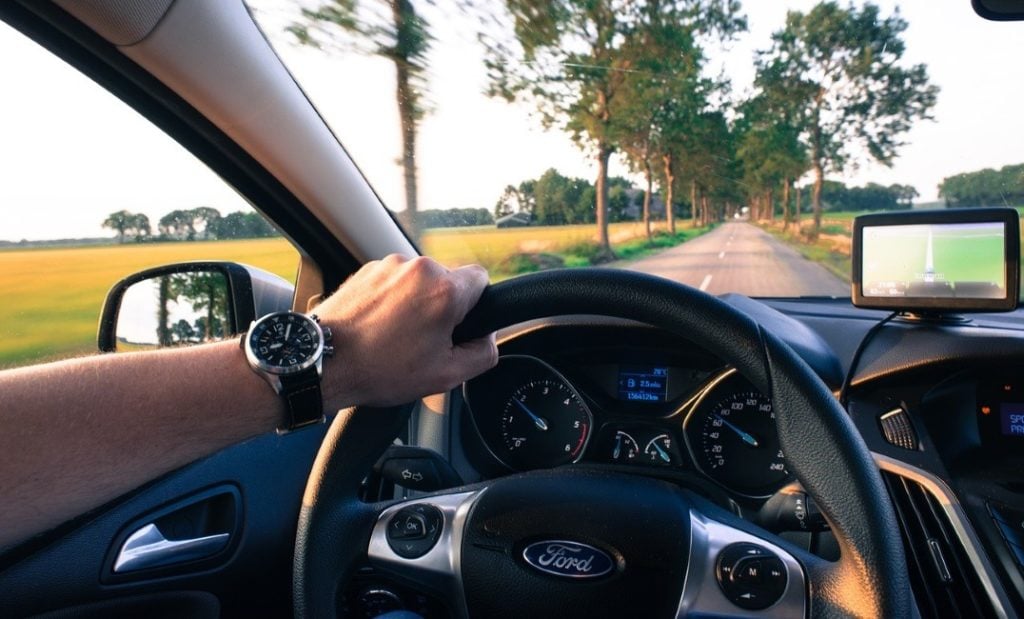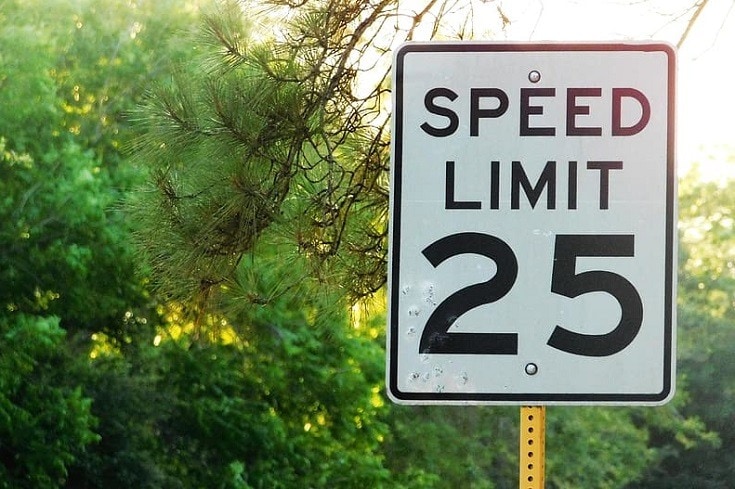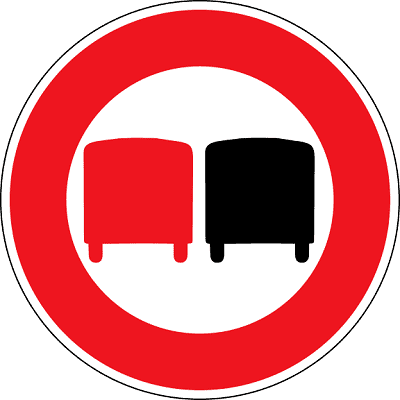The 15 Most Important Safe Driving Tips That Could Save Your Life
-
- Last updated:

First, the bad news. 36,120 Americans died in traffic accidents in 2019.
But it’s paired with good news: according to that same report from the National Highway Traffic Safety Association (NHTSA), traffic deaths have been falling for three years in a row. 2007 saw 41,259 deaths. 1980 saw 51,091.
36,120 is still far too many, but the fact that fatalities are decreasing even as people are driving more should give us all hope. People are driving safer and smarter — often because they’re better informed.
In order to keep deaths on that downward trend, we’ve put together a list of the 15 most important tips for driving safely. If it saves even one person from becoming an NHTSA statistic, we think it will have been worth it.
1. Pay attention
This is the single most important rule of safe driving. Every tip after this one is some variation on “pay attention.”
There’s no reason you should be scared of driving. Millions do it every day without getting hurt. But you should respect the fact that you’re operating heavy machinery. Don’t assume that just because you were fine last time, you’ll be fine this time too.
2. Obey all speed limits
Speeding is still the most common cause of traffic deaths in the United States, even more than drugs and alcohol. Driving over the speed limit was responsible for 22 percent of fatal auto accidents in 2018.
At higher speeds, not only is it much harder to steer your vehicle, but your stopping distance is greatly reduced. Your reaction time and the time it takes your brakes to work both increase exponentially the faster you’re moving.

3. Never drive while drunk, tired, or on drugs
Driving under the influence of alcohol or drugs is a felony, but that’s far from the only reason you shouldn’t do it. Remember, there’s nothing more important when driving than paying attention. Judgment and reaction time can save your life behind the wheel — alcohol and drugs impair both those things.
You might not plan to drive while intoxicated, but after a few drinks cloud your judgment, it can start to sound like a better idea. If you think this might happen, use public transportation or a ride-sharing service, or give your keys to a trusted friend.
Driving while exhausted isn’t taken as seriously as driving drunk (although laws are beginning to address it). Yet studies show that being awake for 24 hours straight is the equivalent of having an illegal amount of alcohol in your blood. If your eyes start drooping, pull over and sleep behind the wheel. It might be uncomfortable, but it’s worth your life.
4. Be predictable
One of the first things you learn as a student driver is that you can’t be responsible for anybody on the road except yourself. You can’t control the other drivers, but you can make sure you’re doing everything possible to keep yourself and others safe.
The best way to do that is to behave predictably. Maintain a steady speed instead of accelerating and slamming on the brakes. Don’t start moving from a light or stop sign, then suddenly stop again. Don’t change lanes without signaling. This will keep other drivers from having to make snap decisions that could lead to an accident.
The key to safe driving isn’t doing everything right. It’s doing everything consistently.
5. Wear a seat belt
NHTSA estimates that seat belts save around 15,000 lives every year. According to that same report, while only 10 percent of Americans drove without wearing their seat belts in 2017, 47 percent of those who died in fatal crashes weren’t buckled up.
Some people think that seat belts do nothing but pin you to your seat. You may have heard some anecdotes about a person trapped in a burning or sinking car by their seat belt. What those stories leave out is that the seat belt was the only reason that person survived the initial accident.
If you’re trapped, there’s a good chance you’ll be rescued. If you’re thrown from your car, your chance of death or injury is far greater.
Also, remember to put your pet in a crate or harness suited for car travel.
6. Keep your eyes moving
“Watch the road” isn’t as straightforward as it sounds. If you just stare straight ahead while driving, you’ll zone out and miss important information. Instead, keep your eyes cycling around the spots you need to pay attention to. This is a good system for beginners:
- Look forward.
- Look left and right.
- Look forward.
- Look in the rearview mirror.
- Look forward.
- Look at the speedometer.
- Look forward and repeat.
7. Leave early
Lots of people who speed aren’t joyriding — they’re just in a hurry. If you frequently find yourself breaking the speed limit to get places on time, start leaving for things 10 minutes earlier than you need to. You’ll have a safer drive, and be less stressed to boot.
8. Do a safety check before starting the engine
Pilots are required to run down a safety checklist before taking off. You can apply that same principle to earthbound driving. Every time you walk to your car, perform this 10-point safety check before you turn the ignition. Don’t drive until you can answer “yes” to all these questions:
- Are the windows clear of obstruction?
- Are the mirrors angled to provide a clear view of the road behind me?
- Are both turn signals operational?
- Are both brake lights operational?
- Does the foot brake have enough clearance to be pressed?
- Is the emergency/parking brake disengaged?
- Are the windshield wipers operational?
- Are the headlights operational?
- Are all doors closed?
- Are all passengers wearing seat belts?
9. Turn on your headlights whenever visibility is low
Headlights aren’t just for seeing the road in front of you. They’re also for making sure other drivers can see you. Even if you think you can see just fine in the rain, fog, or darkness, turn on your headlights anyway — another driver might need the help.
10. Signal your turns and lane changes
This goes back to that predictability thing we mentioned earlier. Turn signals are your most effective method of directly communicating with other drivers on the road. If they know what you’re going to do, they can plan around it and avoid an accident.
Get in the habit of signaling your turns and lane changes even if there are no other cars behind you. You don’t want to forget to do it at a critical moment.
11. Take extra care at stop signs and traffic lights
We’re all guilty of the occasional “rolling stop,” slowing down just enough to make sure there’s nobody else coming before we blow through the intersection. Unfortunately, rolling stops aren’t harmless. NHTSA reports that 10,011 of 2018’s 36560 traffic deaths happened at intersections and that about a third of those intersections had signals.
At any stop sign, come to a complete stop, and spell out the word “stop” to yourself while you look to see if anybody is coming. At a red light, wait until it turns green, then look left, right, ahead, and left again before you start moving. Don’t forget to check for cyclists and pedestrians as well as other drivers.
12. Leave two car lengths between yourself and the next vehicle
This applies when moving or when stopped. You can never be sure what the driver in front of you is going to do, so don’t leave your safety up to chance: stay far enough behind them that two average-sized cars could fit between their bumper and yours. That way, if they slam on the brakes, you’ve got enough time to both notice and react.

13. Don’t drive in the “no zones” of a bus or a truck
You may have seen an eighteen-wheeler with a sign that says “If you can’t see my mirrors, I can’t see you.” It’s good advice. No matter how big or tough your car might be, it won’t come out on top of a confrontation with a truck.
Trucks and buses have much bigger blind spots than typical passenger vehicles. The “no zones,” where the driver will not be able to see you, are two car lengths in front of and behind them, the area under their passenger-side door, and their whole driver’s side.
14. Don’t use your cell phone while driving, even hands-free
Any kind of distracted driving is a problem, but driving while texting or talking on phones is a new and growing concern. NHTSA reports that distracted driving killed 2,841 people in 2018.
Contrary to a common misconception, it’s still risky to talk on a hands-free phone while driving. Having your brain divided between multiple different tasks makes you worse at paying attention, which increases the danger of everything else.
15. Don’t drive in inclement weather
If the weather report suggests heavy rain, snow, or ice on the roads, delay your trip if at all possible. Chains, snow tires, and four-wheel drive help a little, but nothing is safer than just waiting or turning around.
If the worst happens, and you start losing control of your car on a slick road, don’t panic. Fight your instinct to slam on the brakes — that could lock your rear tires and cause you to spin out. Instead, continue to gently depress the accelerator while steering your car toward a safe, open space. Moving forward slowly helps you maintain control while slamming the brakes leaves you at the mercy of the road.

See also our recent popular posts:
- What’s the best car door speaker of the year? We put it to the test!
- Should I Wrap My Car? What Are the Pros & Cons?
- Who’s Driving You? – The Public Awareness Campaign About For-Hire Vehicle Safety
- What Size Windshield Wipers Do I Need?
Conclusion
You’ve probably seen some of these tips before, at driving school or on billboards, but just because you hear them a lot doesn’t make them any less critical.
Your instincts as a driver are important, but you shouldn’t rely on them alone to get you through, no matter many times you’ve hit the road before. Remember, it only takes one mistake.
We truly hope that this article helps you on the road. For more info, we recommend Just Drive PA or Ford’s official website.
We also just released a post about the 10 most popular Ford Mustang models of all time.
Contents

